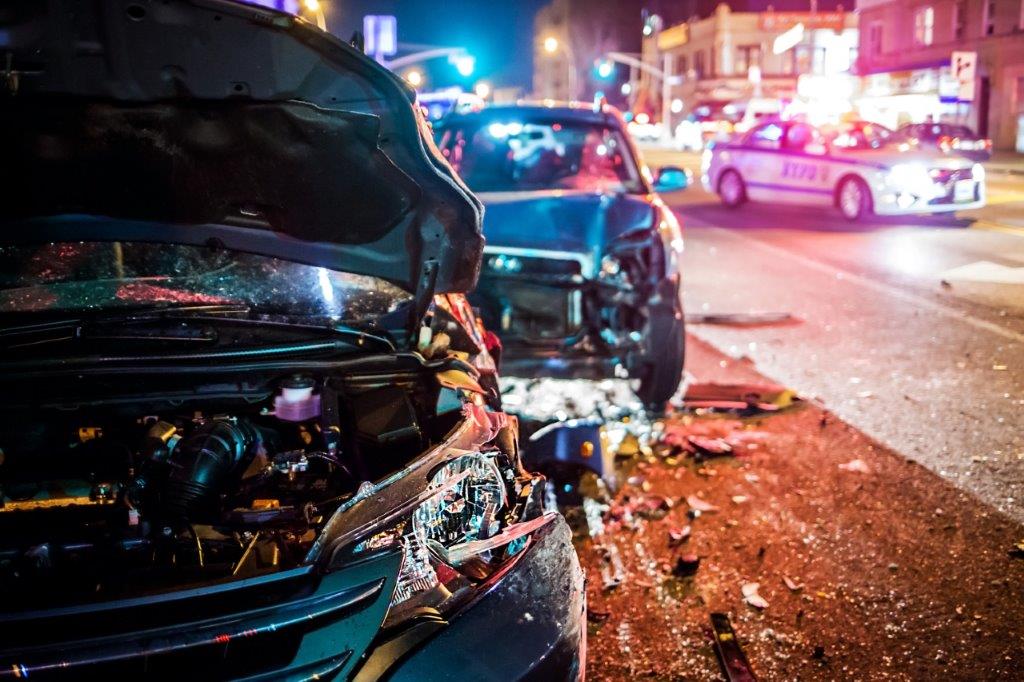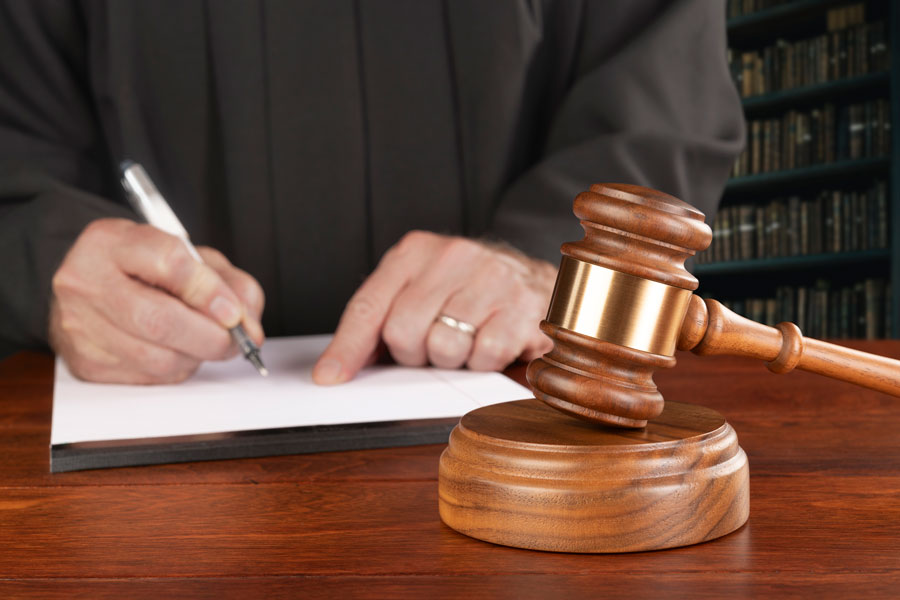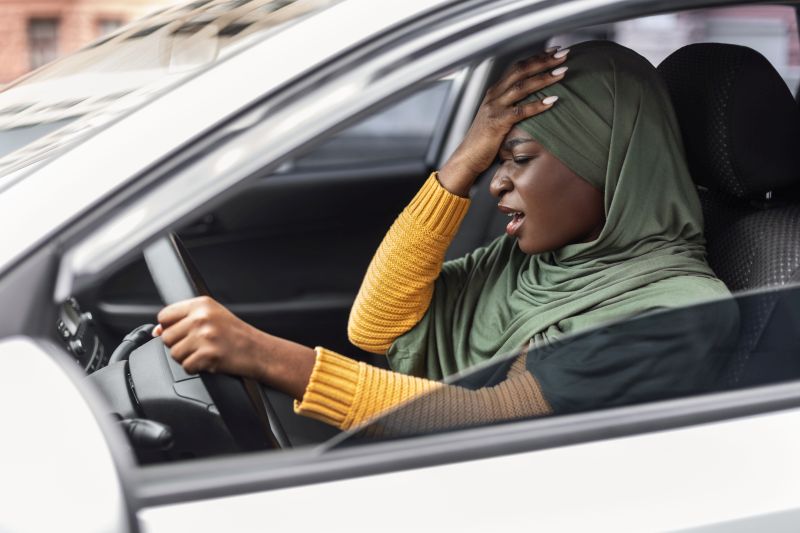Who Pays the Bills? Detailed overview of how your personal injury settlements are distributed. A…

Dealing with an Auto Accident in Washington State
Have you been involved in a car accident in Washington State? No one expects to be involved in an accident and it’s a stressful experience. Whether you were at fault for the accident or were not and are now seeking damages, this guide will take you through the process of dealing with an auto accident in Washington State.
From the laws surrounding auto accidents in Washington State to the settlement you can expect to get, we’ll help you navigate this difficult situation with confidence.
CONTACT US TODAY FOR HELP WITH AN AUTO ACCIDENT IN WASHINGTON STATE
Washington State Car Accident Statistics
In 2019, there were 45,524 reported car accidents in Washington State. Although 32,106 resulted in no injuries, 325 were fatal and 973 resulted in serious injuries.
The Washington State Department of Transportation Crash Data Portal shows the main causes of accidents were teen drivers, distracted drivers, and drunk drivers. In fact, 45 fatalities were due to alcohol-related accidents.
In the US, a staggering 77% of people have been in a car accident, so it makes sense to be prepared and know what to do if you’re ever unfortunate enough to get into an accident, however minor it may be.
The Most Dangerous Roads In Washington State
There are five roads in Washington that are classed as the most dangerous. These roads have the highest number of accidents per year.
Although these roads do not account for all accidents in Washington State, it’s good to be aware of the worst areas to take extra care when driving:
- State Route 20: Containing the infamous Washing Pass, State Route 20 is found in North Cascades National Park. This area is prone to snowstorms and avalanches, which make it prone to accidents. From November to May each year, it’s closed completely to minimize injuries.
- State Route 522: This route is known by locals as the Highway of Death. And is one of the most dangerous roads in the entire US. The road was originally meant to be four lanes but is now two. It’s also an unusually curved road with few dividers.
- Interstate 5: This is the most dangerous interstate in Washington. It has the most reported traffic of any highway in the Northwest with over 70 million using it each year. In the past decade, there have been 300 fatal crashes on Interstate 5.
- Highway 2: This is a rough, remote highway between Spokane and Seattle. It takes emergency response around 80 minutes to reach accident victims on Highway 2, making it another dangerous area in Washington State.
- Hart’s Pass: Probably the most dangerous road of all, Hart’s Pass is located in Okanogan-Wenatchee National Forest. This is a one-lane dirt road with no guard rail protecting cars from the steep drop down to the valley below.
Basics Of Washington State Car Accident Law
Washington is a comparative negligence state. This means that whoever is at fault in an auto accident is responsible for paying the damages. If multiple people share fault, the damages recovered will reflect this by being proportionately reduced.
For example, imagine you are in a car accident and are found to be jointly responsible with the other driver. You and your car are fine, but the other driver has sustained $20,000 in damages. They can sue you for $20,000, but because you are jointly responsible, they will only be granted $10,000.
Washington State law also mandates driving insurance to protect others who may be injured in a car accident you are found at fault for. We’ll go into the details of car insurance you should carry later in the guide.
Money Damages Involved In A Car Accident Case
Most auto accidents in Washington State are dealt with by insurance settlement negotiations, rather than a formal court case. This is a less formal process that begins by submitting a claim with the insurance provider of the person at fault showing the evidence of damage caused.
The insurer will then conduct an investigation to examine the claim and evidence presented. If they find their insurance policyholder to be at fault, they will make a settlement offer. If you accept the offer, you’ll sign a contract agreeing you will not take further action regarding the case.
It’s always best to consult a lawyer before accepting any settlement offer to ensure you’re getting the best deal possible.
What Mistakes Should I Avoid After A Car Accident?
There are several key mistakes many divers make after being involved in an auto accident. Here are the top ones you should avoid.
1. Leaving the Scene of the Accident
It’s against the law to leave the scene of an accident you are part of if there has been an injury or damage to someone’s vehicle. You are obligated to stop and exchange insurance details and contact information so you can make a claim later.
If someone is injured, it’s also common courtesy to ensure they receive the proper medical attention before leaving the scene.
2. Admitting Fault
If you did not cause the accident, never say anything which could be construed as admitting fault. For example, don’t apologize to the other driver if you were not at fault or if you’re not certain who was at fault.
You should also be extremely careful when speaking to insurance providers. By admitting fault to an insurance company, you may invalidate any claims made later, even if you are technically owed compensation.
3. Failing to Gather Evidence
It’s stressful being in a car accident, especially if it is severe. However, it’s important to take photos of the scene to provide as evidence later on. You should try and take photos or video before any vehicles are moved and from as many angles as possible.
Also take photos or video of any stop signs, lights, obstacles that obscure the view of the road, etc. As well as a shot of the other vehicle’s license plate to ensure you have the correct information.
4. Not Going to a Doctor
If you’re hurt in the car accident, seek immediate medical treatment. This is critical if you’ve sustained a serious injury such as whiplash.
Even if you don’t think this is necessary, still go to the doctor to get an assessment. The doctor’s report will be additional evidence for your case. This will be one of the first documents insurance companies request if you put in a claim for personal injury.
5. Accepting the First Insurance Offer
The first settlement offer from insurance companies is almost always lower than they are willing to pay. However, most people accept this immediately and move on. You may be entitled to significantly more than they are offering, which is why it’s best to have an attorney review the settlement and give you their expert advice.
6. Not Hiring an Attorney
Many people believe that they don’t need an attorney when filing an insurance claim. But as we’ve seen, insurance firms often low-ball claimants and you may get less than you deserve. Plus, dealing with an insurance company can be stressful, especially if you’re recovering from injuries.
What Is Personal Injury Protection Insurance?
Personal Injury Protection is an optional type of cover you can opt for when choosing car insurance. It offers another layer of protection to you and your family if you sustain serious injuries or die in an auto accident.
A lump sum is paid out if you find yourself unable to work due to an accident, or if you die and your family is left struggling financially.
It’s not compulsory in Washington State, but can offer added peace of mind should the worst happen.
What Happens If There Is An Accident And I Am Uninsured in Washington State?
It is illegal to drive a vehicle in Washington State without insurance. If you’re in an accident without insurance, the Department of Licensing (DOL) will suspend your license if anyone is injured or a minimum of $1000 in damages occurs.
You’ll receive a suspension notice within 180 days of the accident which will inform you how to avoid the suspension or appeal the suspension.
Depending on the severity of the collision, your license can be suspended for up to three years and you’ll need to pay a $75 reinstatement fee.
Of course, if you’re under the influence of alcohol or found guilty of negligent driving and someone is injured, you also face legal action and a possible prison sentence.
Insurance Requirements In Washington State
Washington State law requires all drivers to have auto insurance to protect others from accidents and injuries. You must have physical proof of your insurance when driving.
The minimum requirements for insurance are:
- $25,000 per person for injuries in an accident
- $50,000 per person if more than one person is injured
- $10,000 per accident for property damage
Alternatively, you can buy an insurance certificate for $60,000 and then deposit this amount with the State Treasurer. You can also get a liability bond if you opt out of the state minimum requirements.
Remember, these are just minimum requirements. Hospital bills for car accident injuries can cost over $100,000 in serious incidents, so you may choose to get more extensive insurance to cover you should the worst happen.
Reporting A Car Accident In Washington State
You are legally required to report an accident to the Washington Department of Transportation (DOT) if it causes death, property damage over $700, or injury to any party. This must be done within four days of the accident occurring.
If the car accident is severe or blocks a road, you should call the police immediately. Having them at the scene will help reduce the likelihood of people involved becoming aggressive and all those involved will be able to complete a police report.
If the accident is reported by a police officer who attends the scene, you don’t need to file a separate report later.
If the accident is minor, it’s not a legal requirement to call the police. However, if no police attend the scene and you fail to report an accident, your license may be suspended. Read more on the steps you should take after being in an auto accident.
How Long Does An Accident Stay On Your Record In Washington State?
Non-commercial auto accidents remain on your license for five years. Whereas commercial vehicle accidents remain for ten years. However, if the accident involves an alcohol-related conviction, it will remain on your record for life.
Any accident logged on your record will show involvement, not fault, if you were not the cause. For example, if you’re rear-ended by another driver, it will still appear on your license record but it will be logged as involvement, not fault.
Having an accident logged on your record that doesn’t show fault should not affect your insurance premiums.
How do I clear my driving record in Washington state?
If you have marks on your driving record for accidents, unpaid tickets, etc., it can make insurance premiums more expensive. Insurance companies don’t want to insure drivers they deem as a risk, so it’s wise to get your driving record cleared if possible.
There are several ways to remove infractions from your driving record:
1. Remove Errors
If you have expired accidents or violations still on your driving record, you can write to the DMV and report the errors. This may happen if the mandatory time the infraction remains on your record has passed but it has not been removed.
If you have anything listed on your driving record, it’s best to keep a record of when it is due to expire so you can check it is removed.
2. Expungement Request
If there are no errors, you can also submit an expungement request with the DMV. If accepted, you may be required to attend traffic school or a driver improvement course. This should remove traffic violations related to any accidents.
If you do either of these, remember to request your driving history 60 days after to ensure the changes requested have been made. If nothing is removed, you’ll need to follow up with the DMV and put in another request for the infraction to be removed.
How do I get my driving record from Washington state?
You can get your driving record from Washington State in person, online or through mail. Whatever method you choose, you’ll pay a $13 fee.
Order Online
Go to License eXpress, which is the DOL website. Fill in all the required information and pay the fee. Once paid, you’ll be able to print your driving record or send a copy to your email to save it digitally.
Order by Mail
If you’d prefer a physical copy of your record sent by mail, complete the Driving Record Request Form. Then send the completed form and a check for $13 payable to the Department of Licensing to:
Driver Records
Department of Licensing
Box 3907
Seattle, WA 98124-3907
It will take around two to three weeks for them to send your driving record back to you.
Order In Person
Washington State has several locations you can go to get your driving record in person. Take a form of photo ID and either cash or a check for $13 made payable to the Department of Licensing.
If you go in-person, you’ll also need to take a completed copy of the Driving Record Request Form with you to give to the clerk. They should have copies of this for you to fill out if you don’t have access to a printer at home.
Understanding Accident Compensation In Washington State
As we’ve previously said, Washington is a comparative negligence state. This means any injured party is able to recover damages from any party at fault. Each person at fault is assigned a portion of the blame and is responsible for paying a proportionate share of the damages.
A full explanation of the accident is conducted before assigning fault. One person could be responsible for 100% of the damages, or 10 people could all be 10% responsible, depending on the circumstances.
When it comes to the compensation you receive for an accident, both economic and non-economic damages are taken into account.
Get a free accident consultation
Economic damages cover the monetary costs including:
- Medical bills
- Lost wages
- Property damage
In very serious auto accidents, it’s not uncommon for medical bills to exceed $100,000.
On the other hand, non-economic damages include:
- Pain and suffering
- Loss of enjoyment in life
- Emotional distress
- Loss of consortium (companionship)
Although these damages are highly subjective, they are calculated by multiplying the economic damages by 1, 2, 3, or 4, depending on the severity of the accident. It will be at the discretion of the judge or jury to decide what multiple to apply to the economic damages to give the final pay-out figure. If you would like to learn more, we have written about The 6 Most Common Damages From Personal Injury Claims.
How Much Do Car Accidents Usually Settle For?
There is no way of calculating the average settlement in Washington State since each accident is totally different. A minor accident with minimal damage may result in $1000 in damages or less. On the other hand, a severe accident that results in significant injury or fatalities may result in hundreds of thousands in damages and injury.
Some subjective factors that significantly influence the settlement amount include:
- Severity of injury caused
- Loss of earnings (if someone can’t work due to injuries)
- Cause of accident (whether reckless driving or alcohol was involved)
- Pain and suffering caused (for example, if lifelong injuries have been sustained that cause mental and emotional suffering)
Our team handles accident cases every day and we have the techniques and contacts we need to get you what you deserve.
How is pain and suffering calculated in Washington?
Pain and suffering is classed as a non-economical cost and so it is calculated by doubling, tripling or quadrupling the economic damages.
This is usually determined by a jury and it is at their discretion to decide what to multiply the economic damages by. Usually, the more severe the accident, the higher the number.
However, if the accident does not go to court, but is dealt with through insurance, the insurance company is responsible for presenting a settlement offer which will take into account the physical damages as well as pain and suffering and loss of wages.
You are not obligated to take this first settlement and can escalate the case to court if you feel you haven’t been offered a fair settlement.
Is Washington a no-fault state for car accidents?
No, Washington state is not a no-fault state. Washington is an “at-fault” or “tort” state. This means when an accident occurs, the person who was “at-fault” will pay for the injuries and damages caused. That is why a personal injury attorney is important. Police and insurance companies will gather all available evidence to decide who is at fault. The insurance of the at-fault driver will pay to cover the other driver’s damages.
It’s important to know that “Fault” can be shared by multiple drivers. For instance, one driver could be 30% responsible for the accident, meanwhile the other driver is 70% responsible. Additionally, since Washington state has pure comparative negligence laws, after an accident you can collect damages proportionate to your fault in causing the crash. Let’s say somebody was 98% at fault for an accident, they are still able to claim the other 2% from the other driver. What’s the difference between Washington and some other states? A “no-fault” state, unlike Washington, requires that drivers purchase an insurance policy that pays out regardless of who is at fault. So instead of making a claim against the driver, the injured person will make a claim against their own insurance policy who will pay regardless of fault. Local laws vary per state and car insurance
Washington classifies as a Fault/Tort State
In Washington state, and other tort states, medical coverage will only pay out after fault has been determined. This means there are more legal hurdles to jump over, and a longer waiting period before fault is decided and a driver can be reimbursed. There can be other implications for drivers too, depending on your state and local car insurance laws.
Tort insurance for Washington State drivers:
- Tort insurance is generally cheaper than car insurance in no-fault states
- Drivers are able to sue the at-fault party for almost any type of loss after the accident. Including lost wages, emotional distress, and medical bills that exceed your coverage.
- You are able to collect damages in proportion to your fault in the accident
- The statue of limitation in Washington state is 3 years after the accident has occurred. That means you have only 3 years from the time of the car accident to sue the at-fault driver.
Why do I Need an Attorney for a Car Accident Being Handled By Insurance?
When you are injured, the last thing you want to worry about are insurance claims, medical bills, and property damage. Our injury attorneys and staff are here to help so that you can focus on healing. We are devoted to handling any disputes that might arise from your case to ensure you are receiving the best possible settlement.
Your attorney will argue your case and explain any legal jargon that insurance companies may use to try and confuse you into taking a low-ball settlement.
Most importantly, they will handle the stress of paperwork and dealing with insurance investigators. If you’ve been in a bad accident, you need to focus on recovery, not handling the legal matters involved with your claim.
With the help of a professional lawyer, you’ll get the best settlement possible without dealing with any of the headaches.
Need an Attorney for Your Car Accident Case?
Being involved in a car accident is a stressful and often traumatizing time. If you’ve been in an accident and suffered damages, we can help make sure you are properly compensated. Whether you’ve sustained physical injuries, loss of earnings, damage to your vehicle, or emotional suffering, you deserve to be compensated.
Our team at WEIERLAW are experts in auto accident cases. If you have suffered a personal injury in a car accident, get in touch today and let us handle the case for you. We’ll ensure you get the best settlement possible.
NO RECOVERY, NO FEE
At WEIERLAW you only pay if there is a financial recovery. The WEIERLAW team can reduce your stress during this difficult experience. Learn more about Contingency fee’s here.



